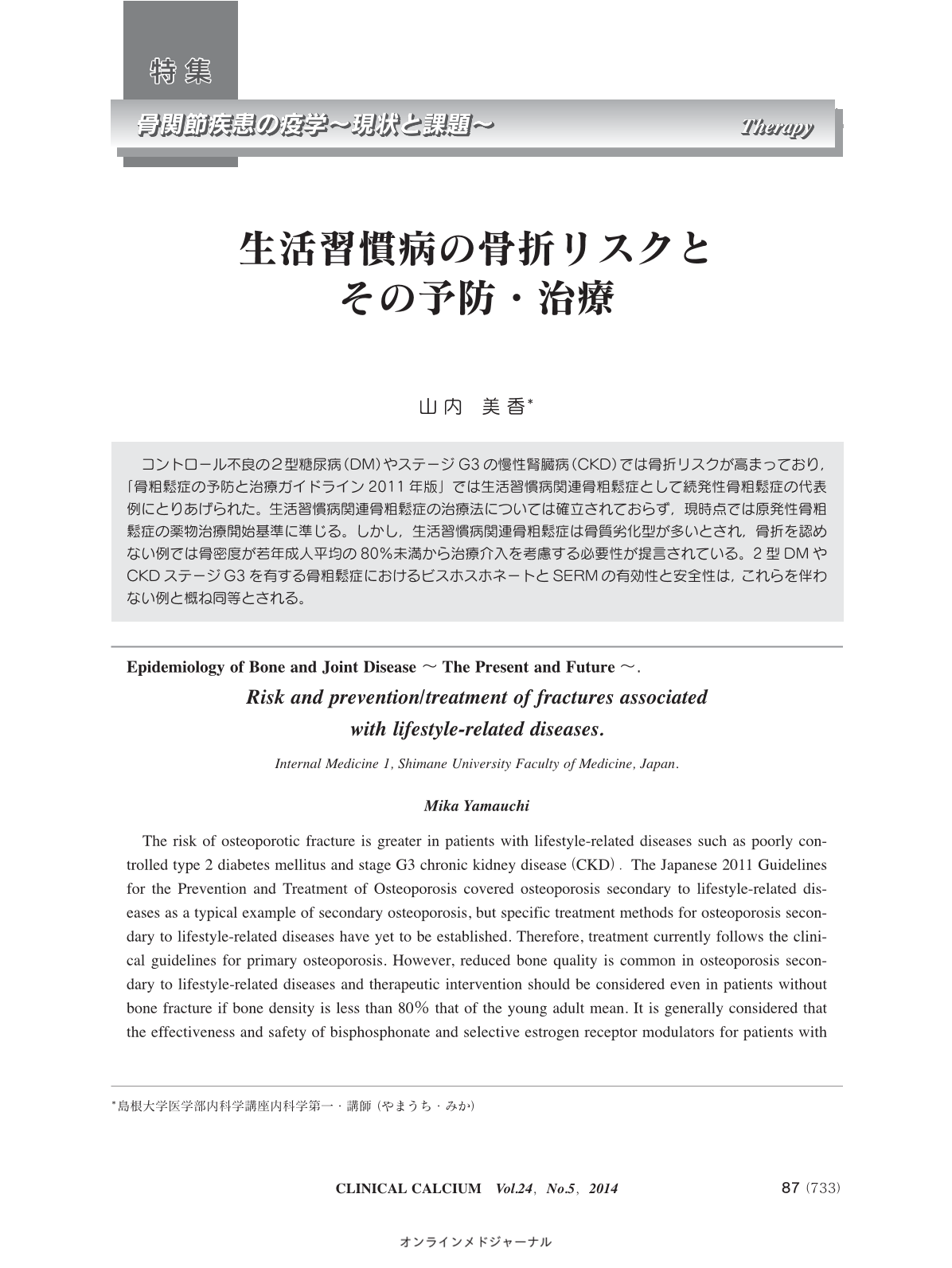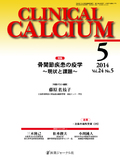Japanese
English
- 有料閲覧
- Abstract 文献概要
- 1ページ目 Look Inside
- 参考文献 Reference
コントロール不良の2型糖尿病(DM)やステージG3の慢性腎臓病(CKD)では骨折リスクが高まっており,「骨粗鬆症の予防と治療ガイドライン2011年版」では生活習慣病関連骨粗鬆症として続発性骨粗鬆症の代表例にとりあげられた。生活習慣病関連骨粗鬆症の治療法については確立されておらず,現時点では原発性骨粗鬆症の薬物治療開始基準に準じる。しかし,生活習慣病関連骨粗鬆症は骨質劣化型が多いとされ,骨折を認めない例では骨密度が若年成人平均の80%未満から治療介入を考慮する必要性が提言されている。2型DMやCKDステージG3を有する骨粗鬆症におけるビスホスホネートとSERMの有効性と安全性は,これらを伴わない例と概ね同等とされる。
The risk of osteoporotic fracture is greater in patients with lifestyle-related diseases such as poorly controlled type 2 diabetes mellitus and stage G3 chronic kidney disease(CKD).The Japanese 2011 Guidelines for the Prevention and Treatment of Osteoporosis covered osteoporosis secondary to lifestyle-related diseases as a typical example of secondary osteoporosis, but specific treatment methods for osteoporosis secondary to lifestyle-related diseases have yet to be established. Therefore, treatment currently follows the clinical guidelines for primary osteoporosis. However, reduced bone quality is common in osteoporosis secondary to lifestyle-related diseases and therapeutic intervention should be considered even in patients without bone fracture if bone density is less than 80% that of the young adult mean. It is generally considered that the effectiveness and safety of bisphosphonate and selective estrogen receptor modulators for patients with osteoporosis and type 2 diabetes mellitus or stage G3 CKD are equivalent to those for patients without such lifestyle-related diseases.



